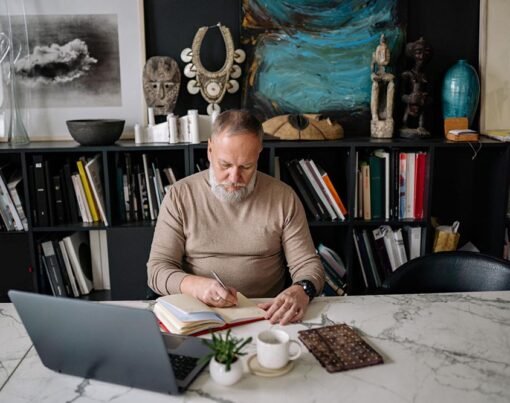It was Orson Welles who said “Create your own visual style… let it be unique for yourself and yet identifiable for others” and we couldn’t agree more.
Photography is both art and science but does not have a formula. Rote repetition of someone else’ work does not show creativity; rather, it only shows your skills with operating a camera. This is why having a unique style is crucial, as it allows you to use your knowledge of equipment and settings to create a personal style.
Developing a personal style early in one’s photography career is crucial for standing out in a crowded field and achieving success. But beyond that, creating a photography portfolio website is essential for showcasing one’s work and personal style.
Table of Contents
The Benefits of Developing Personal Style Early
If you do a Google search, you will likely discover many photographers in your region; that’s how popular photography has become. To rise through the ranks and become popular, having a unique style early in your career as a photographer is important. Otherwise, the choice of a client may come down to money.
Having a personal style helps you establish an identity, which means your work is known for something. Photographers such as Ansel Adams, Annie Leibovitz, and Henri Cartier-Bresson are instantly recognized through their unique styles.
Concentrating on a less specific genre and developing a consistent style within that genre will transform you from being just another photographer to one with a strong foundation, focused and knowledgeable about the identified area of craft.
Benefits of Having a RecognizableRecognizable Personal Style
Having a clear and defined photography style has many benefits, including the following:
- Helps you attract the right clients: Having a personal style that is clear and speaks for itself will attract the right clients who want your style, thereby boosting customer satisfaction.
- Builds a loyal following: When you have a unique and personal style from early on, you will start attracting the attention and loyalty of your clients. Your social media following will increase, and customers will come to know you, know what to expect, and become loyal to your brand.
- Creates a clear style no matter the subject: Having a unique and personal style will help you remain consistent no matter the subject. It will enable you to display your style in various genres of photography, thereby creating pictures that flow well together, even if the subjects are different.
Finding your Personal Style
It would help if you found your unique style to stand out from the crowd. Here are some tips and strategies for discovering and developing your style:
- Experiment with different subjects and styles: There are different genres of photography, including portrait, landscape, product, macro, abstract and so on. Experimenting the different genres will help you discover you’re the style that best suits you.
- Make a collection of inspiring pictures: Just as you have food, places and clothes you like more than others, so are there certain types of pictures you like more than others. Start by collecting several of these pictures and identify why they stand out and what they have in common. The more you understand your taste in photography, the closer you are to discovering and creating a unique style.
- Share your pictures to get useful feedback: Ask for constructive criticism and feedback from family, friends and experts. Asking questions about what they noticed, what patterns exist and what’s missing will help you discover if you have created a unique style.
In creating a unique style, you will need a lot of inspiration and influence, and this can be found by looking up your favourite photographers and discovering what makes their work unique. Also, collecting your favourite pictures can inspire you.
But while this can be a great source of inspiration, if done too often you may end up doubting your own abilities. While it’s good to follow photographers, avoid comparing your work to theirs; rather develop your unique style and practice more to familiarize yourself with it. The more time you spend honing your style, the more authentic it will be.
Ansel Adams is known for his iconic black-and-white pictures of West America and is a technical perfectionist. At the same time, Cartier-Bresson rose to become the father of photojournalism through his spontaneity and humanity. Also, Leibovitz developed her trademark style by using bold colours and unique poses while working for Rolling Stone magazine.
Creating a Photography Portfolio Website
Create a photography portfolio website and discover an excellent way of promoting your photography work and personal style. It allows you to customize your photography, so it appears exactly how you want it; besides, you can display your work without the distractions and advertisements that comes with sharing it through social media.
Here are some photography portfolio templates you can draw inspiration from:
- Jasmine: Every photography portfolio website needs a hero section with a wow effect. Jasmine succeeds at this; it lets you immediately put your best work in front of clients. It has smooth and seamless navigation, with images and texts fading and sliding into place. There are also a lot of interactions scattered throughout the website, and the visual effects are so clean and clear with no distractions.
- Prisma: Primas enables you to build an online portfolio that’s engaging and unique. While it’s a full web design, it allows for customization. There are many sleek elements, allowing you to have your CSS styles in one place; it has ample space to enable you to display your pictures. Besides, it comes with a style guide, allowing you to experiment and make changes.
- Photographos: Photographos have three versions of the portfolio template, each with a touch of elegance. It features a pull and push element with several interactions and animated effects. It provides lots of space to display your work and is ideal for all types of photographers.
Putting Personal Style and Portfolio Website into Practice
Want to promote your portfolio website and build a strong online presence? Here are some tips to guide you:
- Select the right platform
- OptimizeOptimize for mobile devices (smartphones and tablets)
- Have an easy access channel
- Make use of photo editing tools
- Provide background information and context for your pictures
Personal style can be applied to various areas of photography, including landscape, food, street, portrait, travel, forensic photography and many more. Moreover, a portfolio website can help you showcase these different photography styles. All you need do is to identify your target audience or niche, select the pictures, design your picture portfolio and promote your portfolio, and before long, you will be in the lips and hearts of your clients.
Conclusion
Photographers are artists and, like all artists, are rated based on identifiable styles and trademarks. By developing a unique style and maintaining consistency in your photography portfolio, you can subconsciously enable viewers to identify your pictures as coming from the same artist, which will create brand loyalty, expand your customer reach, and make you famous and successful.
So, go ahead and create your unique style, identify a great portfolio website and promote your work. In the words of Irving Penn “after following the crowd for a while, I’d then go 180 degrees in the opposite direction”, you should too.










